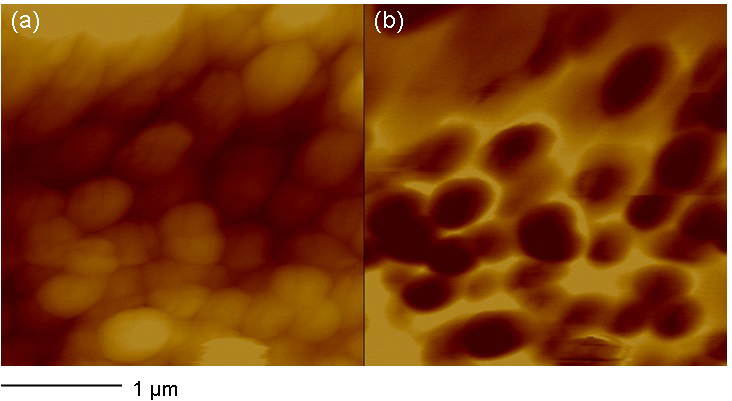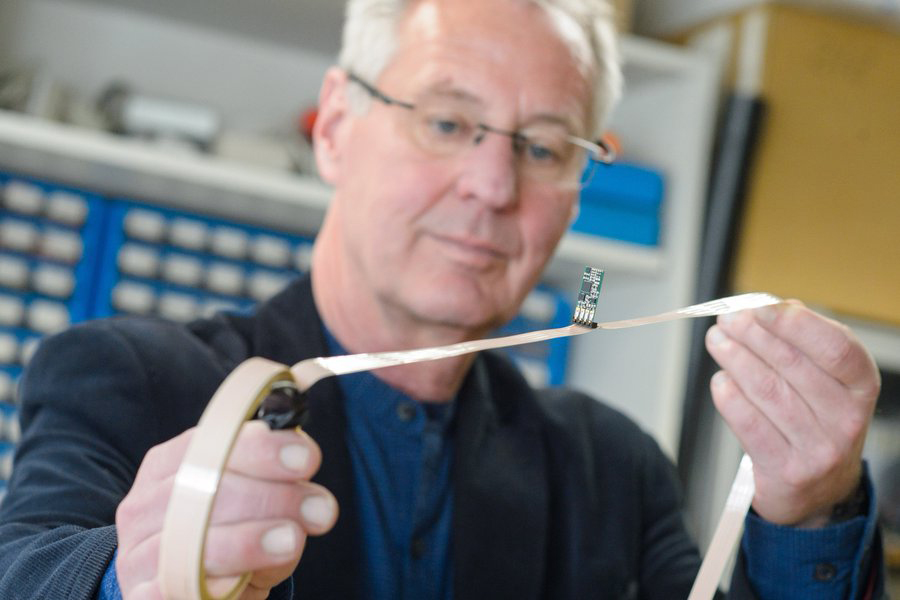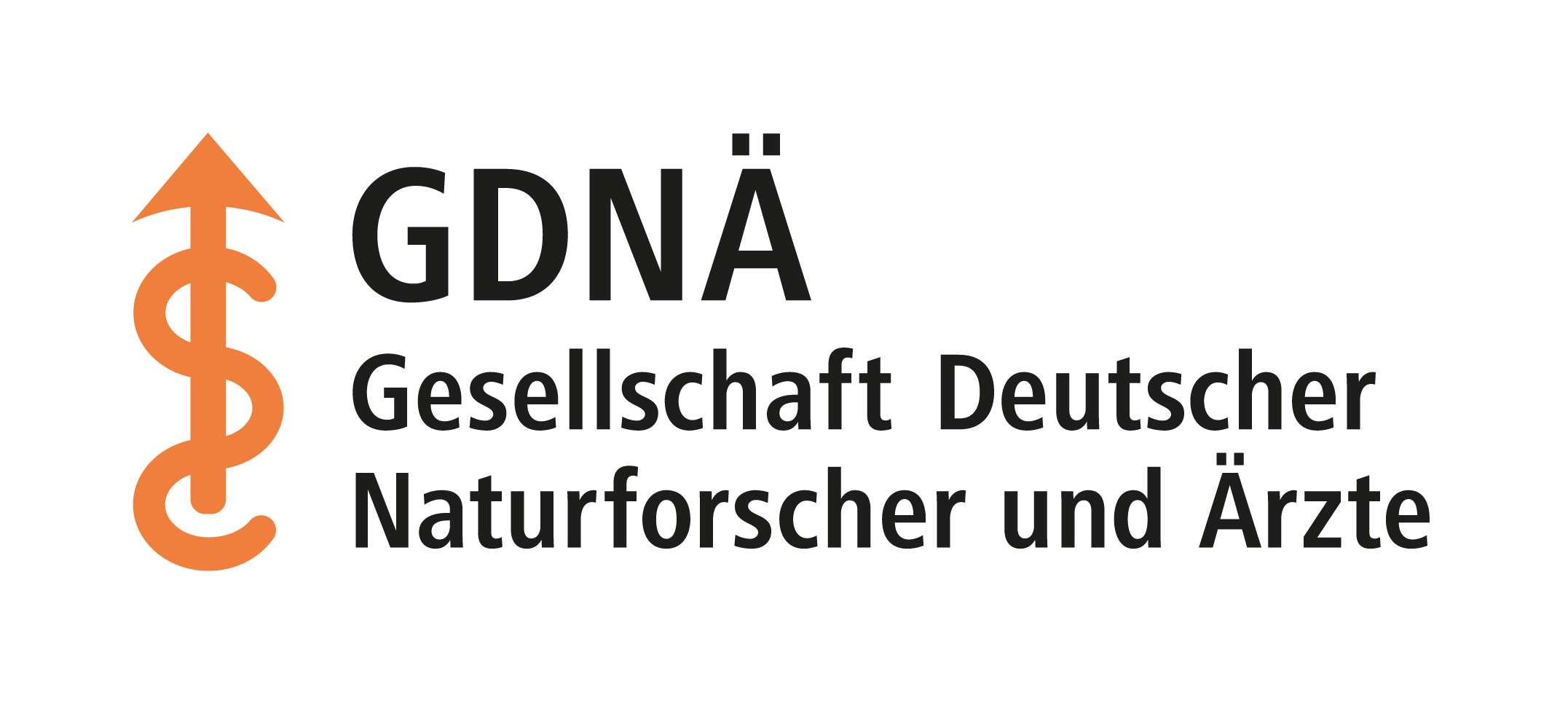“I never wanted to be a professional idiot”
Professor Hartmann, when somebody googles your name and your field of research, he or she quickly lands on a study on the inner compass of living beings. What exactly did you find out?
The study is about the old question of how salmon always find their spawning grounds accurately or how migratory birds manage to orient themselves over long distances. Many animals have similar abilities, which have long been associated with special receptors for the Earth’s magnetic field. This is where we, an international team of researchers consisting of physicists, geneticists and sensory physiologists, came in with our study. After years of work, we succeeded in making small magnetic particles in individual sensory cells of salmon fish and other creatures visible under the microscope. The clusters of iron oxide particles, which are only a few nanometres in size, could not be visualised with such precision until now. Our study also provides clues to the evolutionary history of the magnetic sense, which primordial bacteria already possessed three billion years ago and which propagated into more highly developed organisms via a set of eleven genes.
The publication had a great media response…
…yes, it was reported worldwide. As our team’s correspondent writer, I was initially caught off guard by the many interview requests, but then adjusted and spoke with a great many journalists. The hype, incredible as it may sound, has continued for almost two years – and the public reacts lively to corresponding media contributions. Readers regularly report on their special orientation ability, their sixth sense, as many call it. This can quickly turn into esotericism, so you have to be careful. But when we think of Eskimos, who often find their way effortlessly in vast snowy deserts, the thought suggests itself that humans also have a sense of magnetic field orientation, perhaps even constructed in a similar way.
Do you want to pursue this hypothesis in your research?
No, I will not pursue it further. The physiologists and representatives of other disciplines will have to get on with it now. I have enough to do with my core topics.
What is your main focus?
My lab is all about developing innovative materials, with a view to interesting new applications. One example is nanowires with a diameter of a thousandth of a hair and extremely low electrical resistance. This is still basic research, but in the foreseeable future such wires could help double the performance of IT devices. We are also working on ultra-sensitive magnetic sensors that could benefit cardiac diagnostics enormously, for example. With the help of artificial intelligence, our sensors can detect magnetic signals from the heart and thus important indications of heart health. We have already presented our concept for a magnetocardiograph of the future at trade fairs and, if an investor can be found, we can bring it into use within three years. The advantage of the new method is that no electrodes are needed on the skin; instead, our magnetic field sensors work without contact. Certain signals, triggered for example by conduction disorders, can be recorded much more precisely than before.

© Universität des Saarlandes
Not only do you have a broad range of topics, your laboratory is also home to a wide variety of disciplines. How come?
That’s how new ideas are born, and that’s what fascinates me. Unfortunately, our funding landscape in Germany is structured along disciplinary lines. You need a lot of patience to realise interdisciplinary projects. But I take that on myself. I never wanted to be a professional idiot, but a researcher with vision and an interest in society.
One example of this is your essay on the future of Saarland. What was the response like?
Very lively and it has continued since its publication in 2020. In the essay, my team and I had correctly predicted the closure of the Ford plant in Saarlouis two years before it was announced, which brought us a lot of public attention. Politicians also took the bait. In a discussion with the president of the Saarland state parliament, Stephan Toscani, I was able to explain our methods and forecasts in detail.
Did you also make science-based recommendations?
That is not what we are about. We analyse the present and model plausible future scenarios on this basis. For Saarland, we have drawn up a particularly positive and a particularly gloomy picture of the future with a view to the year 2050. In the positive scenario, for example, we predict a doubling of the population and a flourishing hydrogen economy. Whether this will happen depends on long-term decisions. Basically, the scenarios are meant to inspire everyone who looks at them to develop their own images of the future.
You have also written a children’s book. How did that come about?
The impetus came from a lecture at the Saarbrücken Children’s University. I had explained to my audience how various toys, some of them long forgotten, function physically and was delighted by the many questions parents, grandparents and children approached me with. In my book, which was written in a few summer weeks, I delve into these topics. At the centre is the robot Apus, who, with the help of his friends and a lot of artificial intelligence, goes on exciting adventures and solves a lot of mysteries in the process. With the book, I try to introduce children to science and technology in a playful way. The response was very positive and the first edition sold out quickly.
Children’s initial enthusiasm for scientific topics often wanes over the years. What is the reason for this?
It must have something to do with school lessons. What it is exactly, I don’t know – that’s a matter for the education experts to find out. But from my own experience I can say that the good two thousand young people who visit the Saarland MINT Campus every year are on fire. We have to bring this spark into the schools, because Germany has a huge problem with young people in the STEM subjects of mathematics, computer science, natural sciences and technology.
How does this affect your department?
As at most German universities, the number of students and doctoral students in physics is also decreasing here. Many come from abroad, for example from China.

© Universität des Saarlandes
Academic cooperation with China is increasingly viewed with scepticism. You have two Chinese honorary professorships. How do you deal with the new situation?
Of course, I am increasingly concerned about the political developments in China. However, in my experience, there is a clear difference between the behaviour of the political elite and the view of many young people at Chinese universities. Through their stay here with us as doctoral students or young academics, these young people virtually get to experience a contrasting program: free expression of opinion, critical views and lively political discussions. I believe this experience of freedom in the Western world, which has a strong formative effect, justifies potential dangers from the outflow of knowledge or technologies.
You are retired and continue to do research and teach. Has the shortage of young talent reached the professorial floor?
No, no, that’s not the reason. I simply enjoy doing it very much and take advantage of a model project at my university that allows me to continue working for a few years. My workload includes six hours of lecturing per week, for example on nanotechnology, supervising several research projects and doctoral theses. From my point of view, this could go on for a few more years.
In the GDNÄ, you are involved as an elected representative and group chair for the 2024 conference in Potsdam. What motivates you?
The GDNÄ stands for an interdisciplinarity that is missing in many places in our scientific landscape. I am also impressed by the student program. The very successful 200th anniversary celebration in Leipzig gave the society a great boost and I like to contribute to maintaining this momentum.

© Universität des Saarlandes
In the lab: Uwe Hartmann at the ultra-high vacuum scanning tunnelling microscope.
About the person
After studying physics at the University of Münster, Uwe Hartmann completed his scientific training at the Universities of Giessen and Basel as well as at the Jülich Research Centre and the IBM Research Centre in San José, California. Since 1993 he has been Professor of Experimental Physics at Saarland University, where he heads the Chair of Nanostructure Research and Nanotechnology. One of his focal points is experimental nanostructure research, where he is primarily involved with scanning probe technology and magnetic field detectors. Professor Hartmann received a number of calls to universities and non-university institutions, but remained loyal to his Saar University. His scientific oeuvre comprises more than 400 lectures and more than 300 publications, including several books. He is the holder of several patents and co-founder of several companies, co-editor of various specialist journals and is involved in the board of nanotechnology associations. In 2013/14 he was Vice President for Europe and International Affairs and in 2015/16 Vice President for Planning and Strategy at Saarland University. For his scientific achievements, Uwe Hartmann was awarded the Philip Morris Research Prize (1998), an honorary professorship at Fudan University in Shanghai (2006), an honorary professorship at East China Normal University in Shanghai (2009) and the Federal Cross of Merit (2015).

© Edition Ulrich Burger 2019
Hartmann’s children’s book “Apus und die Geheimnisse hinter den Geheimnissen” (with drawings by Anne Holtsch, Edition Ulrich Burger 2019) struck a chord with the audience.
Weitere Informationen:
